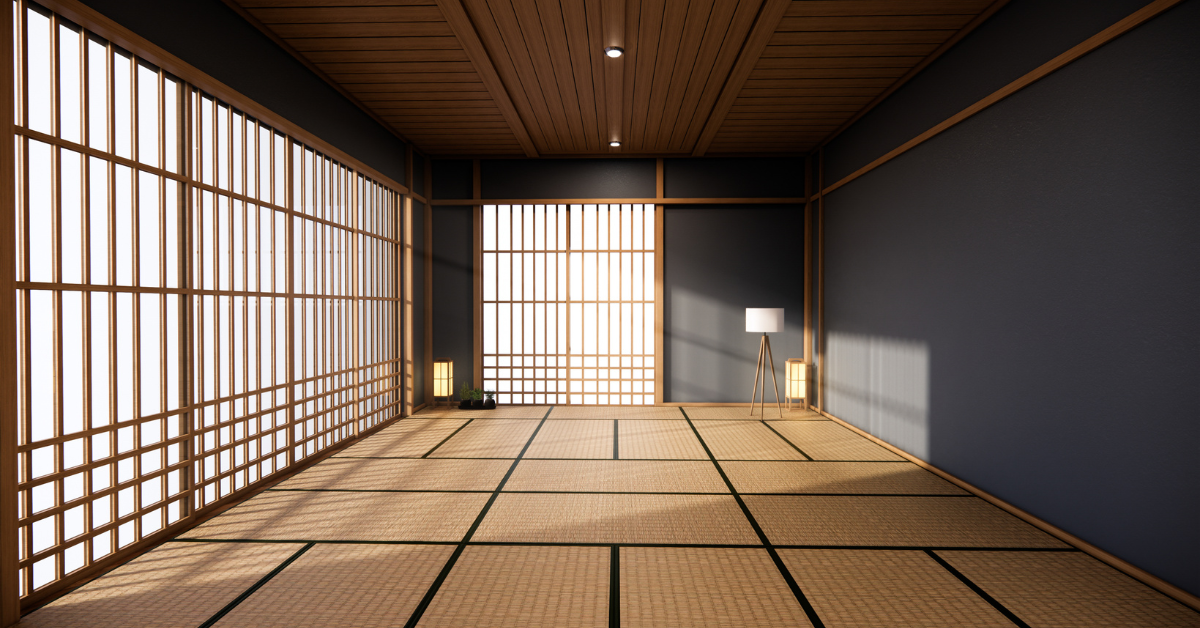Tatami is more than just flooring in Japan. It is a cultural symbol that represents traditional lifestyle, architecture, and values. Foreigners often encounter tatami in Japanese inns, tea rooms, and traditional houses, but its meaning goes far beyond a simple mat. This article explores tatami’s history, function, and cultural significance to help you understand its unique position in Japan.
What is Tatami?
Tatami is a flooring material made of rush (igusa) woven on the surface and layered with straw or wooden boards as the core. It feels soft underfoot and is excellent at absorbing humidity and insulating rooms, making it well-suited to Japan’s humid climate.
On tatami, people can sit directly without chairs or lie down comfortably, enhancing the livability of the space. In addition, the scent of tatami is believed to have a calming effect, naturally helping people feel relaxed when they enter a tatami room.
The History of Tatami
The origin of tatami dates back to the Heian period (8th–12th century). At first, it was used as a thick mat for nobles to sit on, rather than flooring for the entire room. Later, during the Muromachi period, entire rooms began to be covered with tatami, and it came to represent formality and prestige. By the Edo period, tatami spread to common households and became the standard flooring material.
Thus, tatami can be seen as a cultural asset that has expanded its role alongside societal change.
Tatami as a Unit of Room Size
In Japan, room size is often described by the number of tatami mats. Expressions such as six-tatami or eight-tatami rooms are frequently seen in real estate listings and travel guides. This unit, based on a single mat, is unique to Japan and often surprises foreigners.
Below is a table showing common room sizes.
| Number of Tatami Mats | Approximate Size | Common Usage |
|---|---|---|
| 4.5 mats | About 7㎡ | Small room, study |
| 6 mats | About 10㎡ | Standard bedroom, guest room |
| 8 mats | About 13㎡ | Spacious living room |
| 10 mats | About 16㎡ | Large living room, tea room |
Regional Differences in Tatami Size
Tatami sizes differ depending on the region. This reflects differences in architectural culture and highlights Japan’s diversity.
| Name | Approximate Size | Main Region |
|---|---|---|
| Kyo-ma (Honma) | 191cm × 95.5cm | Kyoto, Western Japan |
| Chukyo-ma | 182cm × 91cm | Nagoya region |
| Edo-ma (Go-hachi-ma) | 176cm × 88cm | Tokyo, Kanto region |
| Danchi-ma | 170cm × 85cm | Public housing, apartments |
Larger tatami are common in Western Japan, giving a spacious feel, while smaller tatami dominate in Eastern Japan, fitting compact urban housing.
Types of Tatami and Their Features
Tatami comes in several varieties. Each has unique features, showing that tatami is more than just flooring.
| Type | Features | Modern Use |
|---|---|---|
| Hon-datami | Traditional straw-core tatami with durability and elasticity | Traditional rooms, temples |
| Synthetic-core tatami | Made with wood chips or foam, lightweight and affordable | Apartments, modern homes |
| Borderless tatami (Ryukyu tatami) | Square-shaped without borders, creating a modern look | Modern homes, tea rooms |
| Carpet-style tatami | Made with resin or synthetic material | Western-style rooms, children’s rooms |
Tatami and Japanese Culture
Tatami is deeply tied to Japanese customs and etiquette.
- The practice of sitting in seiza developed on tatami
- In tea ceremony and flower arrangement, tatami layout affects etiquette
- Martial arts and sumo also use tatami flooring or its derivatives
Tatami has served as a foundation connecting people and culture.
The Practical and Health Benefits of Tatami
Tatami is more than flooring; it also benefits health and daily life.
| Benefit | Description |
|---|---|
| Humidity control | Absorbs moisture, helps regulate indoor climate |
| Insulation | Keeps rooms cool in summer and warm in winter |
| Soundproofing | Softens footsteps and reduces noise |
| Relaxation | The scent of rush calms the mind |
Tatami in Modern Use
Although wooden flooring is now mainstream in Japan, tatami remains highly valued.
- Guest rooms in traditional inns and hotels
- Tea rooms and resting spaces in gardens
- Rooms with both modern and traditional designs in homes
- Japanese cultural centers and exhibitions overseas
Recently, small tatami mats sold as interior items have become popular, allowing foreigners to enjoy Japanese ambiance at home.
Tatami Maintenance and Daily Life
Because tatami uses natural materials, it is sensitive to moisture and direct sunlight. Regular care such as flipping, re-covering, and cleaning is essential. While this may seem troublesome, the longer tatami is used, the more character it gains, reflecting the Japanese value of cherishing objects.
Here is a guide to typical maintenance.
| Method | Frequency | Purpose |
|---|---|---|
| Vacuuming and dry wiping | Daily | Prevents dust and mites |
| Flipping | Every 3–5 years | Covers sun damage and stains |
| Re-covering | Every 5–10 years | Restores beauty and fragrance |
| Renewal | Every 15–20 years | Replaces the core for durability |
Conclusion
Tatami is a traditional flooring that has supported Japanese life and symbolizes culture itself. It is so deeply ingrained that it is used internationally as a unit of room measurement.
Its history stretches from noble culture in the Heian period to everyday homes in the Edo period, and continues into modern housing and tourism. With its many types and regional variations, learning about tatami offers a deeper appreciation of Japanese lifestyle.
When visiting Japan, take the time to experience tatami’s feel and fragrance. Within each mat lies the aesthetic values that the Japanese have cultivated for centuries, along with history and tradition.






